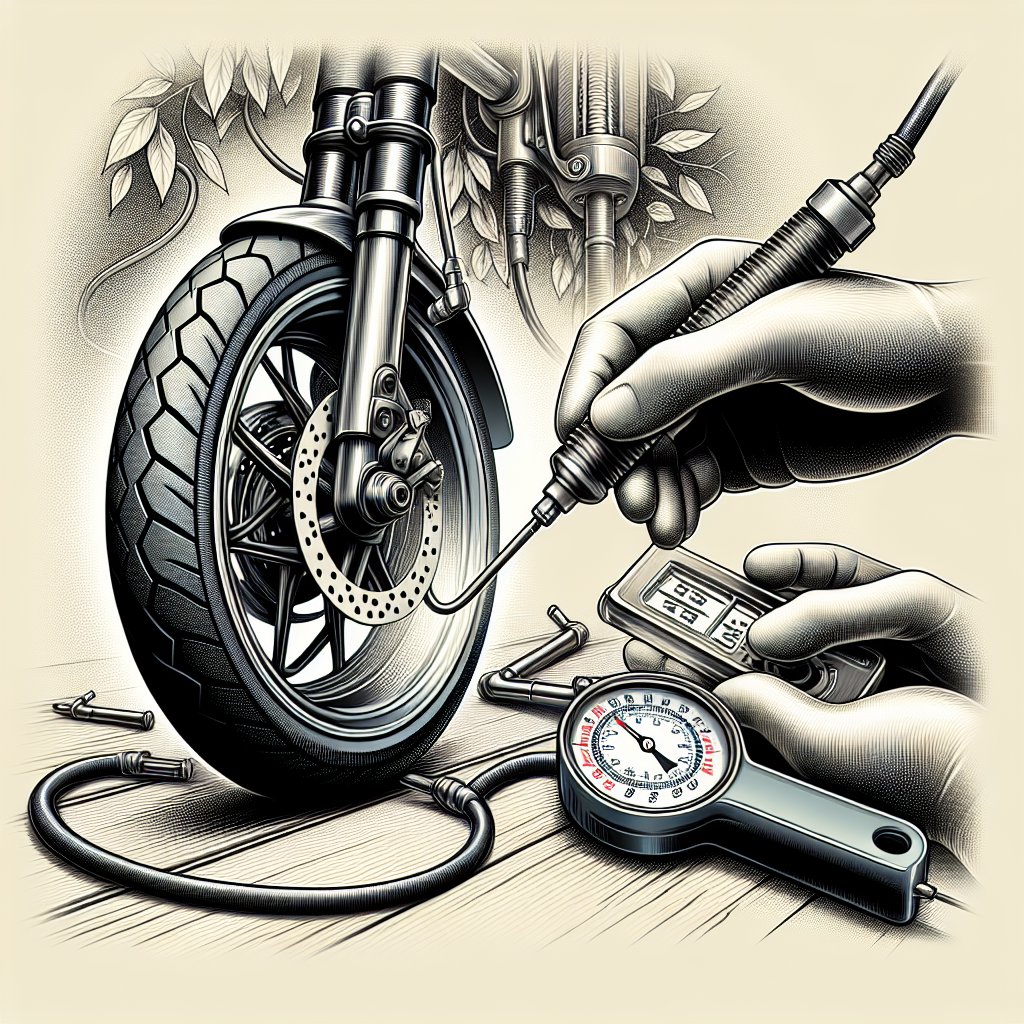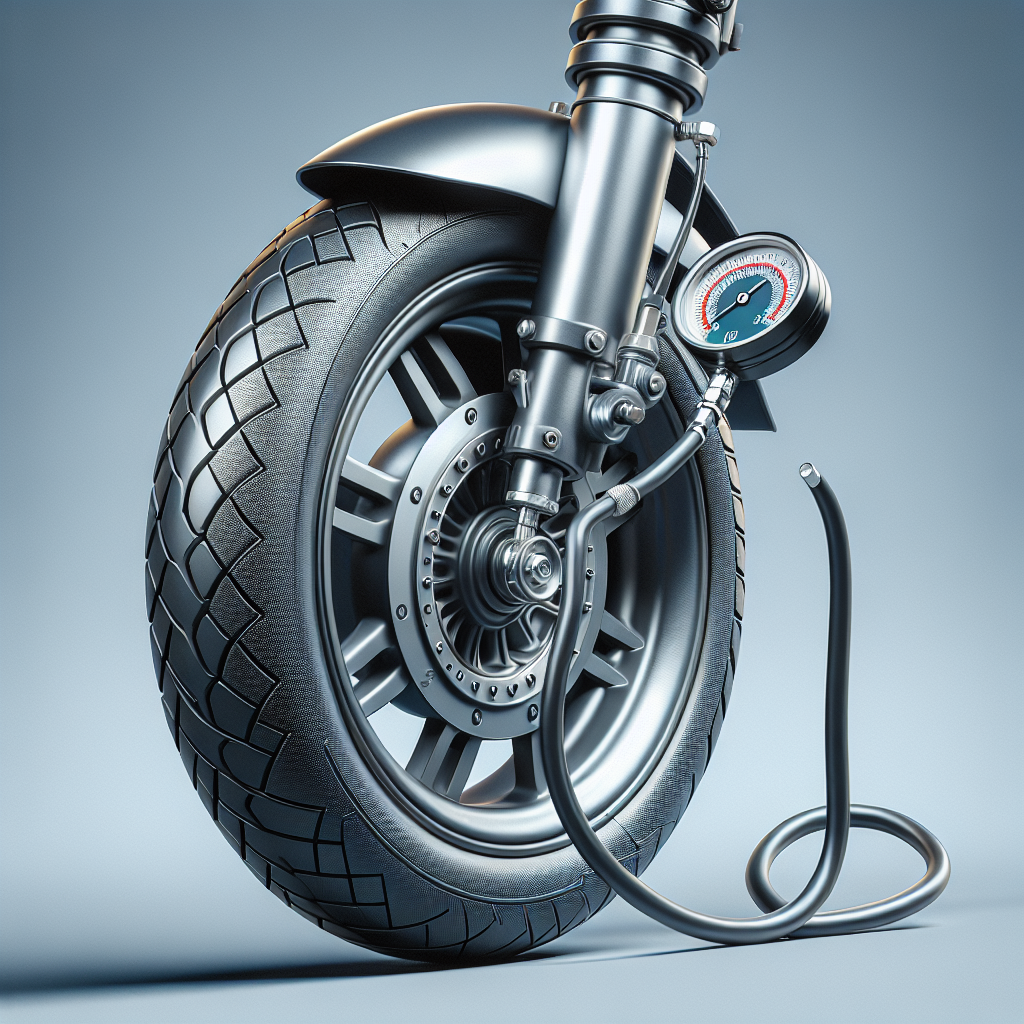So you’ve got yourself a brand new electric scooter and now you’re wondering how to keep it in top-notch condition. Well, one crucial maintenance task you shouldn’t overlook is checking the tire pressure. Just like any other vehicle, maintaining the correct tire pressure is not only essential for a smooth and safe ride, but it also extends the lifespan of your scooter’s tires. But fret not, because in this article, we’ll guide you through the simple steps of checking the tire pressure on your electric scooter, ensuring that you’re always rolling smoothly and safely on your two-wheeled adventure.
1. Introduction
Welcome to this comprehensive guide on checking the tire pressure on your electric scooter. Maintaining proper tire pressure is crucial for the safety and performance of your scooter. In this article, we will explore the importance of tire pressure, understanding PSI, the tools needed for checking tire pressure, step-by-step instructions on how to check tire pressure, how to inflate or deflate the tires, proper tire pressure maintenance, common issues and troubleshooting, and finally, a conclusion. So, let’s dive in and ensure you have the correct tire pressure for a smooth and safe ride!
2. Importance of Tire Pressure
Maintaining the correct tire pressure is essential for several reasons. Firstly, it affects the overall performance of your electric scooter. Properly inflated tires provide optimal traction, stability, and control, resulting in a smoother and safer ride. Additionally, maintaining the correct tire pressure can extend the lifespan of your tires, saving you money in the long run. Lastly, incorrect tire pressure can potentially lead to decreased battery life and increased energy consumption, affecting your scooter’s overall efficiency. Understanding tire pressure is crucial in order to ensure the best riding experience possible.

3. Understanding Tire Pressure
3.1 Understanding PSI
PSI, or pounds per square inch, is the unit of measurement used to quantify tire pressure. Each electric scooter has a recommended PSI range, which can usually be found in the user manual or on the manufacturer’s website. It is important to understand and adhere to this recommended range to ensure optimal performance and safety.
3.2 Recommended PSI for Electric Scooters
The recommended PSI for electric scooters can vary depending on the model and manufacturer. Generally, the recommended PSI for electric scooter tires ranges from 30 to 50 PSI. However, it is crucial to check the specific recommendations for your scooter to ensure accuracy.
3.3 Impact of Incorrect Tire Pressure
Incorrect tire pressure can have several negative effects on your electric scooter. Underinflated tires can lead to decreased stability, reduced maneuverability, and increased risk of punctures or damage to the tires. On the other hand, overinflated tires can result in a harsh and uncomfortable ride, decreased traction, and potential damage to the scooter’s suspension system. It is important to maintain the correct tire pressure to ensure a safe and enjoyable riding experience.
4. Tools Needed
To check and adjust tire pressure on your electric scooter, you will need a few essential tools.
4.1 Tire Pressure Gauge
A tire pressure gauge is a handheld tool used to measure the pressure inside your scooter’s tires accurately. There are various types of pressure gauges available, including digital and analog options. Choose one that is compatible with your needs and preferences.
4.2 Air Pump
An air pump is necessary to inflate or deflate your scooter’s tires as needed. There are portable air pumps available specifically designed for electric scooters. Make sure to choose one that is suitable for the valve type on your scooter’s tires.

5. Preparing to Check Tire Pressure
Before checking your scooter’s tire pressure, it is important to follow these steps to ensure accurate readings.
5.1 Park the Scooter on a Flat Surface
To obtain accurate tire pressure readings, ensure that your electric scooter is parked on a flat and level surface. This will prevent any discrepancies caused by uneven ground, which can affect the accuracy of the readings.
5.2 Allow the Tires to Cool Down
Tire pressure can increase as the tires heat up during use. It is recommended to wait for at least 30 minutes after your last ride before checking the tire pressure. This will allow the tires to cool down to their normal operating temperature, giving you the most accurate readings possible.
5.3 Locate the Tire Valve
Each scooter tire will have a valve stem through which you can check and adjust the tire pressure. The valve stem is typically located on the side of the tire or, in some cases, near the center of the wheel. Familiarize yourself with the location of the valve stems on your scooter’s tires before proceeding.
6. Checking Tire Pressure
Now that you are prepared, let’s walk through the step-by-step process of checking your electric scooter’s tire pressure.
6.1 Remove the Valve Cap
Start by removing the valve cap from the tire valve stem. The valve cap is a small plastic or metal cap that protects the valve from debris and dust. Set the valve cap aside in a safe place where it won’t get lost.
6.2 Attach the Tire Pressure Gauge
Take your tire pressure gauge and firmly press it onto the valve stem. Ensure a tight seal between the gauge and the valve to prevent any air leakage during the reading process.
6.3 Reading the Tire Pressure
Once the gauge is properly attached, wait for a moment until the gauge stabilizes and provides a reading. The pressure measurement will be displayed on the gauge, typically in PSI. Take note of the reading for each tire and compare it to the recommended PSI range for your specific scooter model.
6.4 Comparing with Recommended PSI
Compare the measured tire pressure with the recommended PSI range. If the reading falls within the recommended range, the tire pressure is considered optimal. However, if the reading is lower or higher than the recommended range, adjustments will be necessary.

7. Inflating or Deflating the Tires
After checking the tire pressure, you may need to make adjustments to ensure the tires are inflated to the correct PSI.
7.1 Inflating the Tires
If the measured tire pressure is lower than the recommended PSI, you will need to inflate the tires. Connect the air pump to the valve stem and gradually pump air into the tire. Take regular breaks to check the pressure with the tire pressure gauge and avoid overinflating. Once the desired tire pressure is reached, remove the air pump and securely reattach the valve cap.
7.2 Deflating the Tires
In case the tire pressure exceeds the recommended PSI, you will need to deflate the tires. Use a small tool, such as a valve core remover or a thin screwdriver, to depress the valve core inside the valve stem. This will release air from the tire. Periodically check the pressure with the tire pressure gauge and stop deflating when the desired PSI is achieved. Remember to reattach the valve cap securely after deflating.
8. Proper Tire Pressure Maintenance
Maintaining proper tire pressure is an ongoing process to ensure your electric scooter’s optimal performance and safety. Here are some tips for properly maintaining tire pressure.
8.1 Regularly Check Tire Pressure
Make it a habit to check your scooter’s tire pressure regularly, ideally once a month or before every long ride. This will allow you to identify any potential issues early on and maintain optimal performance.
8.2 Adjusting Tire Pressure as Needed
Depending on various factors such as temperature, load, or riding conditions, tire pressure can fluctuate over time. Adjust the tire pressure as needed to keep it within the recommended PSI range. Regularly checking and adjusting tire pressure will ensure a comfortable and safe riding experience.
8.3 Seasonal Variations
Remember that tire pressure can be affected by seasonal changes in temperature. As the weather gets colder or hotter, tire pressure can decrease or increase. Monitor and adjust tire pressure accordingly to compensate for these seasonal variations.
8.4 Professional Inspection
While you can handle basic tire pressure maintenance yourself, it is advisable to seek a professional inspection from time to time. Professionals can assess the overall condition of your scooter’s tires, detect any potential issues, and ensure your scooter’s safety and performance.

9. Common Issues and Troubleshooting
Every rider may encounter certain issues or challenges related to tire pressure maintenance. Here are some common issues you may face and how to troubleshoot them.
9.1 Leaking Air
If you notice that your scooter’s tires are losing pressure faster than expected, there may be a leak. Inspect the tire surface for any visible punctures or damage. Additionally, check the valve stem and ensure it is securely tightened. If you cannot identify any visible damage or the leak persists, it is recommended to seek professional assistance.
9.2 Difficulty Reading the Tire Pressure
In some cases, it may be challenging to read the tire pressure on the gauge. Ensure that you are using a reliable and accurate tire pressure gauge. Take the reading in a well-lit area to clearly see the display. Additionally, familiarize yourself with the gauge’s instructions or user manual to understand its specific operation.
9.3 Uneven Tire Pressure
If you find that the tire pressure varies significantly between tires, it may indicate an issue with your scooter’s suspension or wheel alignment. In such cases, it is recommended to consult a professional for a comprehensive inspection and necessary adjustments or repairs.
10. Conclusion
Congratulations! You now have a comprehensive understanding of how to check and maintain the tire pressure on your electric scooter. Proper tire pressure is crucial for performance, safety, and overall enjoyment of your rides. Remember to regularly check your scooter’s tire pressure, make adjustments as needed, and seek professional assistance when necessary. By following these guidelines, you can ensure a smooth and safe riding experience on your electric scooter. Happy scooting!


